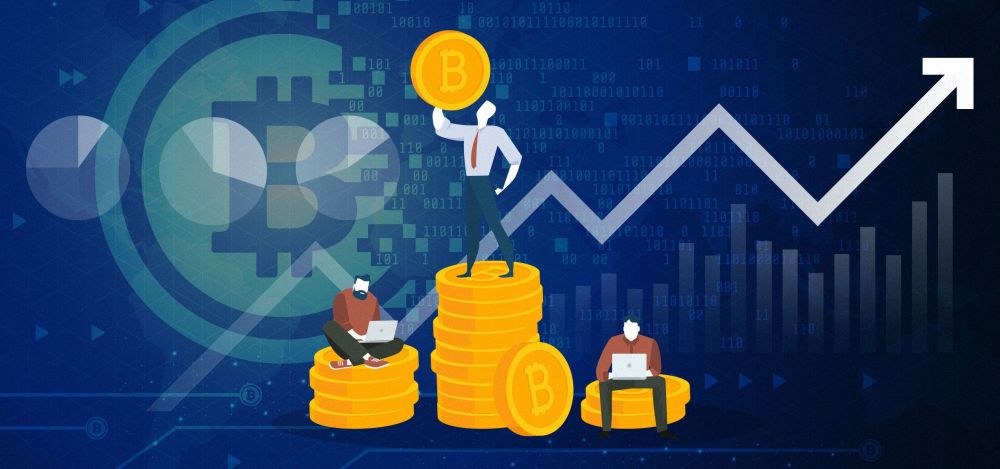Do you also provide bitcoin signals? On a weekly basis, we get between 10 and 20 questions about bitcoin and whether our programs would be able to produce signals on the currency (commodity?).
The short answer is: Of course we can. We can run our programs on any market with a value. If you want to know the patterns for apple juice or grade A pasteurized butter milk, we can do it.
The longer answer involves asking a question. Is it a good idea?
As most of you know, Bitcoin is a cryptocurrency that started about 12 years ago as an alternative to paper money. In 2017, due to popular demand, Bitcoin obtained its own futures market with the symbol BTC. Since then, little has changed other than its price.
Don’t worry, this isn’t going to be another blog about the value (or lack thereof) of bitcoin. There are already plenty of those. Rather, today’s blog is about its usefulness to traders simply as a set of data.
So back to our question…is trading bitcoin with our programs a good idea?
Building a fractal for bitcoin signals
First we need to start with some talk of process. Building a fractal with data means a lot of data is needed. And by a lot of data, we mean tick data which includes the price and volume of every trade for the entire history of a market. The more data we have, the smoother a fractal becomes and the easier it is to identify patterns.
For the purposes of comparison, the S&P data set includes roughly 400K data points per day. Extrapolate that over the entire history of the market dating back to 1993 and you end up with about 2.8 Billion lines of data including price and volume.
Bitcoin, by contrast, has merely 5K data points per day with a history going back only about 3 years. This comes to roughly 4 million points or about 0.14% of the S&P.
Not a good start.
Is there enough volume?
Next, we need to look at volume. At the moment, we cover 34 futures markets. These range from the big ones like the S&P, DAX and Gold to the smaller ones like Lean Hogs and Bean Oil. But there are other futures we don’t currently cover simply because they have limited volume. Oats, Rough Rice, OJ, for example all have daily volumes that make it difficult to trade without very choppy statistics.
So back to bitcoin. Bitcoin’s daily futures volume has been growing since inception in Dec 2017, but the figure still remains low. At the moment, this average daily volume is around 5K contract per day. By comparison, this would make it #35 on our list of futures we observe. Not a bad thing, but not ideal either. The more volume a market has, the more fluid the patterns are and the less choppy the result may be.
Now that we have all the available data, it’s time to run a test. We took all known bitcoin futures data and ran it through our programs, (walk forward testing only… backtesting is for chumps) and some interesting things emerged. The results were quite strong with a net gain of 18000 vs. a market loss of 5,500 points. The standard deviation was also impressive (meaning we produced a relatively smooth curve even when only looking at a single market).
The chart below shows Bitcoin’s price (in blue) since Bitcoin futures emerged. The line in orange represents our performance trading this market roughly once a week for the last 3 years with 1 contract at all times.

But most important for us was that the pattern we found does not follow any known pattern from any other market we cover. Bitcoin is entirely uncorrelated (more on the value of noncorrelated assets).
So, we need your help…
Another advantage of Bitcoin is that it can be traded via multiple different platforms. One does not need to use futures unlike Oats and Rice, etc. So, we have a question. Who would be interested in receiving signals based on our programs to trade Bitcoin? Should we add this growing market to our rotation and make it #35 on our list?
-

The rhytm beneath the noise
-

You Don’t Need a Trading Style. You Need an Edge.
-

Consistency Isn’t the Goal—It’s the Outcome
-

What 2 Quadrillion Data Points Told Us
-

Math and Physics-Based Trading in Any Market Condition
-

Do not worry about anomalies
-

Consistency should not be the goal. Consistency should be the result.
-

Stop canceling fridays
-

The Elliott Wave Forecast is Subjective, Bias Driven And Backwards looking
-

Finding patterns in market data

